OptiMSM® Capsules
OptiMSM® Capsules
- Produced by Bergstrom Nutrition in the United States
- Consists of 100% pure MSM, without any additives
- Suitable for vegans
Description
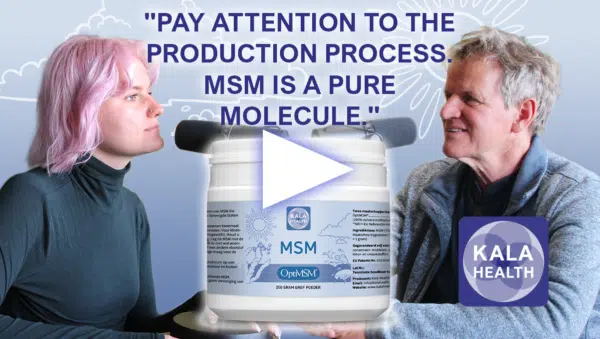
OptiMSM® Capsules
- OptiMSM® is the highest quality MSM in the world, produced by Bergstrom Nutrition in the United States
- OptiMSM® consists of 100% pure MSM, without any further additions
- OptiMSM® is purified through 4-fold distillation, making it virtually free of contaminants
- Each vegetarian capsule contains 1000 mg of OptiMSM®
- Suitable for vegans
KALA Health MSM capsules contain 1000 mg of OptiMSM® per capsule, the highest quality MSM available today.
For the MSM capsules, OptiMSM® ‘Coarse Powder’ is used. These pure crystals do not clump together, making them the most suitable crystals for encapsulation.
These capsules are filled according to strict quality standards set under HACCP. No fillers are added, and the capsules used are 100% plant-based.
Due to their small size, the capsules are quick and easy to swallow. Another advantage is that the capsules can be opened, and the contents can be dissolved in liquid if desired.
OptiMSM®: The purest form of MSM
MSM (methylsulfonylmethane) is a small molecule with significant importance for the body. The chemical formula of MSM is CH3SO2CH3. It is a small, light molecule with a molecular weight of 94. MSM is therefore highly absorbable by the body. MSM is the form in which sulfur naturally occurs in all living organisms, and where it is biologically active. MSM is naturally present in fruits, vegetables, and, for example, in milk from grazing cows. It is an odorless, white powder that dissolves well in warm water and in a wide range of organic solvents.
MSM has been studied since the 1960s by scientists affiliated with the Health Sciences University in Oregon, United States, under the leadership of Professor Stanley W. Jacob M.D. Dr. Jacob documented his experiences in several books: “The Miracle of MSM, the Natural Solution for Pain” (1999) and “MSM, the definite guide” (2003).
OptiMSM® is the purest MSM available, produced by Bergstrom Nutrition in the United States and uniquely purified through multiple distillations. OptiMSM® is also the only MSM with published, peer-reviewed research. OptiMSM® is the only MSM in the world produced according to the global patents of Robert J. Herschler.
The Different Types of MSM
There are two qualities of OptiMSM® powder. Firstly, there is the fine powder, known as the ‘Microprill‘ quality. This is a fine powder where the crystals easily stick together. This quality is primarily intended for tabletting, requiring very few fillers. To maintain processability, 0.1% silicon dioxide has been added (silicon dioxide is nothing more than finely ground sand!). So, you could say that this quality of OptiMSM® is 99.9% pure.
The second quality of OptiMSM® is the coarse powder, known as the ‘Flake‘ quality. These crystals are coarser and stick together less. ‘Flakes’ are primarily intended for mixing into feed and dissolving in water or fruit juice. However, due to the larger crystals, it takes a little longer to dissolve than with ‘Microprills’. OptiMSM® ‘Flakes’ not only mix more easily with food, but no silicon dioxide has been added. Therefore, you can say that the ‘Flake’ quality is 100% pure.
The Prime Supplier of Sulfur
The element sulfur belongs to the same group as the element oxygen. Sulfur and oxygen are thus closely related. In oxygen-deprived environments, organisms often use sulfur instead of oxygen as a source of energy. In 1986, an underground cave was discovered in Romania that likely had not been in contact with the outside world for five million years. In the cave, a total of 48 new invertebrate species were discovered. These animals owe their lives to warm, upwelling, sulfur-rich water that fills the cave with high concentrations of hydrogen sulfide (H2S). For humans, this sulfur-rich gas would be deadly. For the bacteria, fungi, and animals in the cave, however, it forms the basis of life.
We must consider that hundreds of millions of years ago, oxygen was scarce on Earth. It was only after land plants began to develop that the oxygen content in the atmosphere rose. Then it took a very long time for the oceans to absorb the oxygen. We know that hundreds of millions of years ago, algae in the oceans began producing simple organic sulfur compounds, such as MSM. These sulfur compounds were likely the first and most important energy sources for all life forms that subsequently developed. This feeds the idea that higher life forms may be genetically programmed to use MSM as a source of sulfur.
In various studies involving laboratory animals, MSM labeled with radioactive sulfur (35S) was used. These studies revealed that after oral intake, MSM is partially broken down, and the released sulfur is utilized by the body. The radioactive sulfur (35S) was found in the collagen and keratin of hair and nails. Surprisingly, radioactive sulfur was also found in the amino acids methionine and cysteine, and in the proteins of the blood serum. This discovery proves that sulfur derived from MSM is absorbed in the so-called methionine metabolism.
The Primal Source of Methyl Groups
Methyl groups are the building blocks from which all organic molecules are constructed. The body is constantly breaking down tissues and cells and rebuilding them. Millions of times per second, methyl groups are made available to molecules in our bodies. This process, called methylation, affects all life processes. Without methyl groups, new DNA cannot be formed, and thus, new cells cannot be created.
The interesting fact now arises that the molecule MSM is composed of two methyl groups and one sulfur atom (as a sulfate group). A molecule of MSM is broken down in the body into a sulfate (sulfur) group and two methyl groups, leaving no residue. It is almost certain that MSM has been an important and perhaps the sole supplier of methyl groups for the primitive life forms that developed hundreds of millions of years ago. Are all other life forms that have developed since then genetically programmed to use MSM as a methyl donor? It seems so.
It is remarkable that MSM can be ingested in almost unlimited quantities by all examined life forms so far, without signs of poisoning. In technical terms, a so-called LD50 has never been established, which is the dosage in a test setup at which 50% of the test animals die.
The half-life of MSM in the body is approximately 48 hours, and after 480 hours, MSM is still detectable in the urine. This makes MSM the most stable source of sulfur and methyl groups for the body.
MSM: Natural or Synthetic?
Many people seem to struggle with the question of what exactly the source of MSM is. Is it natural or synthetic? Is it plant-based? Some producers claim that their MSM is ‘distilled from pine trees.’ We also frequently encounter the claim that MSM is ‘of natural origin,’ or even ‘organic.’ Recently, we even heard from a distributor who claimed that their MSM would be entirely plant-based, produced from vegetable oils such as flaxseed oil.
MSM is a natural substance found in the human body and many foods. The richest source of MSM is breast milk, in concentrations of no more than a few milligrams per liter.
In theory, MSM could be extracted from pine trees. However, we would then have to cut down most of the pine trees on earth to obtain a reasonable amount of MSM. Therefore, practically speaking, this story is impossible, as well as the claim that MSM is of ‘natural origin’ or ‘organic.’ All MSM available on the market today does not come from trees, plants, or oils. You cannot isolate, extract, or cultivate MSM; it requires a chemical reaction to produce it.
The American producer Cardinal Nutrition (now: Bergstrom Nutrition) was the first to use wastewater from the paper industry as raw material for the production of MSM. Lignin was extracted from this wastewater, which was further converted into DMS (dimethylsulfide) by binding it to sulfur. It was then converted into DMSO, and then into MSM.
This is what the production process looks like:
Natural ingredient (lignin) in wastewater → CH3 (methyl groups)
CH3 (methyl groups) → chemical process → DMS
DMS → chemical process → DMSO
DMSO → chemical process → MSM
Question: How ‘natural’ can MSM be considered when produced in this manner? It can’t even be called ‘partially natural’ because it is entirely synthetic, produced through a series of manufacturing steps, starting from a ‘natural substance’ in wastewater from the paper industry.
Anyone considering the above production process understands that it’s pure deception to claim that such MSM is ‘natural’ or ‘plant-based,’ or even ‘organic,’ even if lignin from wastewater from the paper industry is used as a raw material. Instead, we must accept that all MSM sold as a dietary supplement today is synthetically produced.
A major drawback of wastewater is that it contains many other substances that we do not want to find in our dietary supplements, including various contaminants. For this reason, years ago, Bergstrom Nutrition decided to move away from wastewater and use DMSO sourced from the pharmaceutical industry. DMS and DMSO are small and relatively simple molecules that can be easily produced synthetically and are identical to what is found in Mother Nature.
All MSM offered today is synthetically produced from DMSO and hydrogen peroxide. Because all DMSO is synthetically made, the origin of DMSO is irrelevant.
It is a misconception to believe that one MSM is ‘more natural’ than another. All MSM offered commercially is synthetically made from the same raw materials. However, there is a difference, but we need to look at the quality of production and the purity of the final product.
Bergstrom Nutrition’s focus on quality and purity sets its OptiMSM® apart from all others. From the outset, Bergstrom Nutrition has pioneered the distillation process to ensure purity and safety. Experts worldwide recognize that Bergstrom Nutrition uses a superior, multiple distillation method to purify MSM. The end product is biologically identical to MSM found in nature.
The Quality of MSM
MSM has traditionally been produced by Bergstrom Nutrition in the United States. This high-quality MSM is supplied by Bergstrom Nutrition under the brand name OptiMSM®.
OptiMSM® is the highest quality MSM available on the market today.
OptiMSM® distinguishes itself by being purified through quadruple distillation. This process removes any potential contaminants, leaving only pure MSM behind. It is supplied with certificates guaranteeing the absence of molds and bacteria, and the levels of various heavy metals are either non-detectable or almost non-measurable:
| Mercury (Hg): | < 0,001 ppm (mg/kg) |
| Cadmium (Cd): | < 0,005 ppm (mg/kg) |
| Lead (Pb): | < 0,01 ppm (mg/kg) |
All other producers ‘purify’ their MSM using the inexpensive Crystallization method, in which MSM is dissolved in water and then dried. This is not truly a ‘purification,’ although it is often referred to as such. Not all contaminants are removed but remain present. Moreover, the water used usually contains contaminants that end up in the MSM crystals.
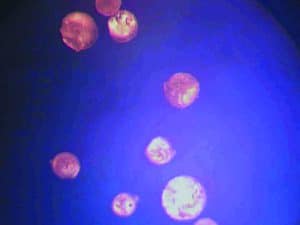
The left photo shows a crystal of OptiMSM® after purification through quadruple distillation. No traces of contamination are visible on the crystal. On the other hand, the right photo shows a crystal of MSM obtained after ‘purification’ by the crystallization method. Not only does the crystal have a different shape, but traces of contamination are also clearly visible on the crystal. These traces may be organic contaminants or heavy metals.
Such MSM is supplied with certificates where the absence of molds, yeasts, and bacteria is often not guaranteed. Heavy metals are usually not given individually but guaranteed as a ‘group’ to < 20 ppm or < 10 ppm.
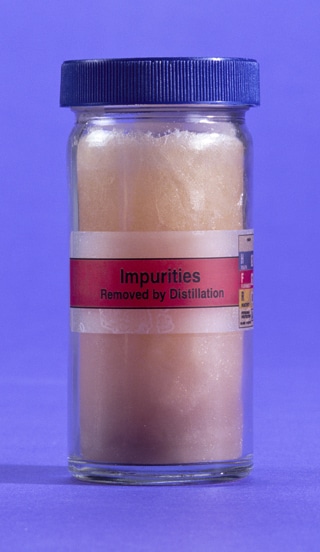
heavy metals no heavy metals
The right photo shows OptiMSM® after distillation. No contaminants are present anymore. The left photo displays the contaminants that remain in the distillation setup. These are mainly the heavy metals. These heavy metals remain present in the MSM of other producers. Bergstrom Nutrition is the only company in the world that applies the distillation method to purify MSM.
HOW DOES DISTILLATION REMOVE CONTAMINANTS?
Bergstrom Nutrition utilizes the costly distillation method to purify MSM. In this method, MSM is heated to its boiling point (238ºC). The MSM vapor is collected, cooled, and crystallizes back into MSM crystals. This method results in the highest purity:
All substances with a lower boiling point evaporate before MSM begins to vaporize. This effectively removes volatile, organic compounds that may be present as contaminants.
All substances with a higher boiling point remain behind. These are mainly the heavy metals.
| Boiling point | |
| Lead (Pb): | 1740º C |
| Cadmium (Cd): | 765º C |
| Arsenic (As): | 613º C |
| Mercury (Hg): | 356º C |
The Discovery of MSM
Over forty years ago, Dr. Robert Herschler, a chemist working at the Crown Zelllerbach Corporation paper mill, was tasked with finding a useful application for lignin, one of the factory’s waste products. Oxidation of lignin in a reactor was found to produce DMSO (Dimethylsulfoxide), a natural, organic form of sulfur. DMSO was not a new substance, as a Russian scientist had already synthesized it in 1867 and described it in a German journal. Initially, Crown Zellerbach focused its research on the use of DMSO as a solvent for pesticides (!). One day, Dr. Herschler and a colleague had some pesticide dissolved in DMSO on their skin and became severely ill. Investigation revealed that the pesticide, which normally couldn’t be absorbed through the skin, had somehow entered the men’s bodies. Meanwhile, Dr. Herschler had been in contact with Dr. Jacob, who was primarily interested in DMSO as an antifreeze for transplant organs. Both men discussed the accident and realized that DMSO apparently had an important property that no one knew about: it could dissolve chemical substances and deliver them into the human body through the skin. Dr. Jacob wondered if DMSO could also be a carrier for drugs and began some small-scale experiments. When applied to the skin, DMSO was absorbed so quickly that test subjects could taste a bitter flavor in their mouths and smell a garlicky odor in their breath after just a few minutes.
DMSO became a highly discussed substance. The pharmaceutical industry saw it as an ideal carrier for delivering drugs into the body through the skin. However, in the early 1960s, the world was shocked by the ‘Thalidomide affair.’ Thalidomide, prescribed to pregnant women to combat nausea and vomiting, was found to cause birth defects in the limbs of fetuses. In response to this scandal, the U.S. Food and Drug Administration (FDA) decided to halt the approval of new drugs until further notice. As a result, the pharmaceutical industry lost interest in DMSO.
DMSO has been the subject of various international symposia. According to Dr. Jacob, over 12,000 scientific publications have been released over the years regarding the biological applications of DMSO, and 28,000 on its chemical properties.
Due to its bitter taste and pungent odor, however, DMSO never became popular with the general public. Moreover, it was found to easily cause skin irritations when applied topically. In the late 1970s, Robert Herschler initiated further research into the natural metabolites of DMSO. The research was conducted at the Oregon Health Sciences University in Portland, under the direction of Professor Stanley Jacob. Previous research had already revealed that MSM is the main metabolite of DMSO. After being absorbed by the body, about 15% of DMSO is converted into MSM. Urine analysis showed that orally ingested DMSO was no longer detectable in urine after 120 hours. However, MSM was still detectable after 480 hours. The delayed excretion is likely caused by MSM forming a stronger bond with body tissues than DMSO. The researchers discovered that many of the therapeutic effects attributed to DMSO were likely due to its metabolite, MSM. Furthermore, they found that MSM is much more user-friendly than DMSO: it is more stable, odorless, and does not cause skin irritations.
For a long time, the application of MSM remained limited to the veterinary market and cosmetics. Fear of the strict regulations of the FDA was the underlying reason. It wasn’t until the FDA relaxed its rules in the 1990s that MSM became available as a dietary supplement for humans.
Composition
OptiMSM® Capsules contain the following ingredient:
Ingredients
| Composition per 2 capsules (daily dosage): | %RI* | |
|---|---|---|
| OptiMSM® | 2000 mg | - |
* RI = Reference intake
Ingredients: 1000 mg OptiMSM® (100% pure methylsulfonylmethane).
Other Ingredients: Methylsulfonylmethane, hydroxypropylmethylcellulose (vegetable capsule).
Guaranteed free from: Preservatives, synthetic fragrance, colorants, and flavorings.”
Use & dosage
Recommended use
| For Who? | Daily Dosage |
|---|---|
| Adults: | 1 to 2 capsules per day |
| Children: | Adjust the dosage based on body weight |
Daily dosage: Adults take 1 to 2 capsules twice daily, or as recommended. For children, adjust according to body weight. Preferably take during a meal. Adhere to the recommended daily dosage.
Mandatory statement: A dietary supplement is not a substitute for a varied diet. A varied, balanced diet, and a healthy lifestyle are important. This product is a dietary supplement (contains MSM).
Safety: Consult a healthcare professional before using supplements during pregnancy, lactation, medication use, or illness.
Storage advice
Storage: Store in a dry place at room temperature, and out of reach of small children.

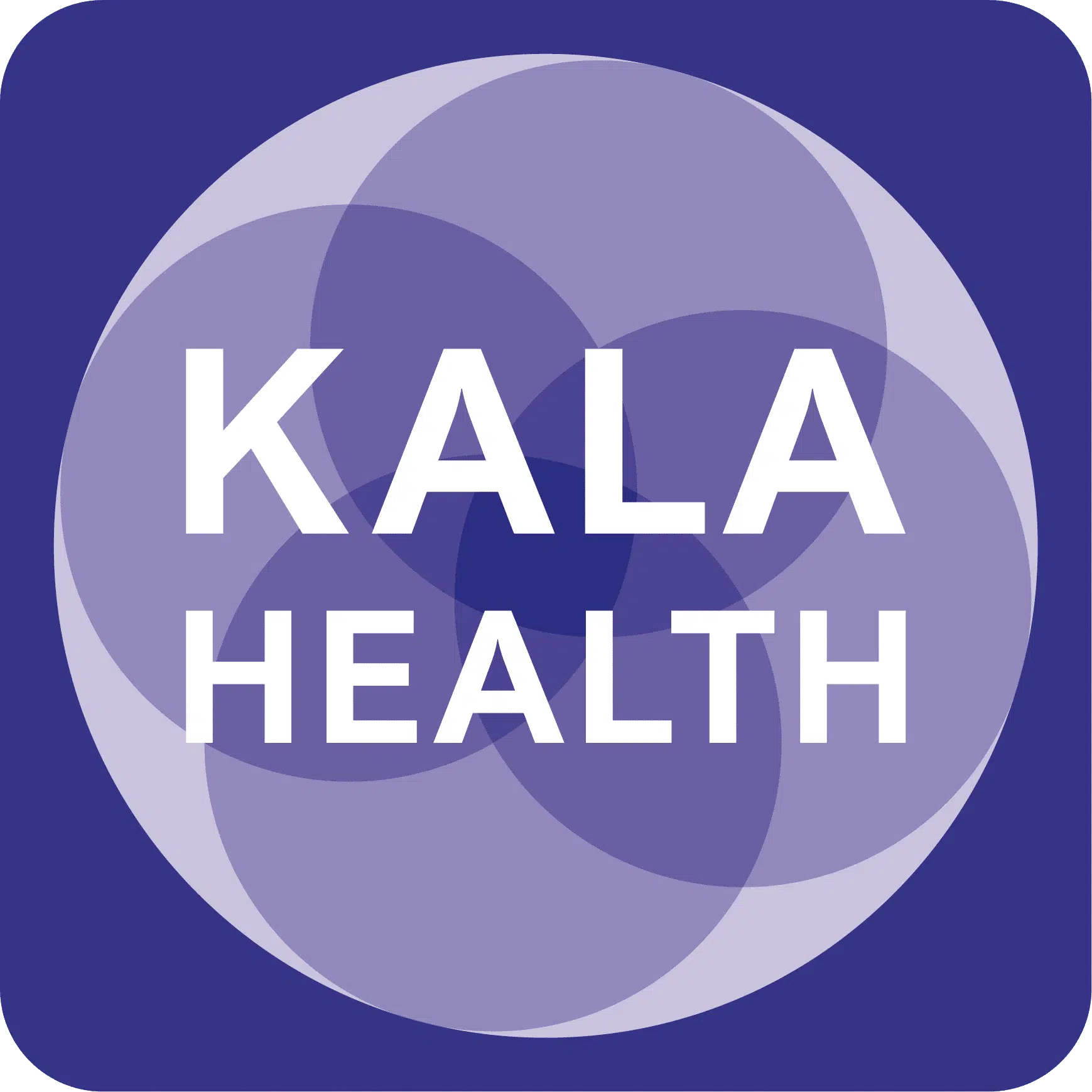
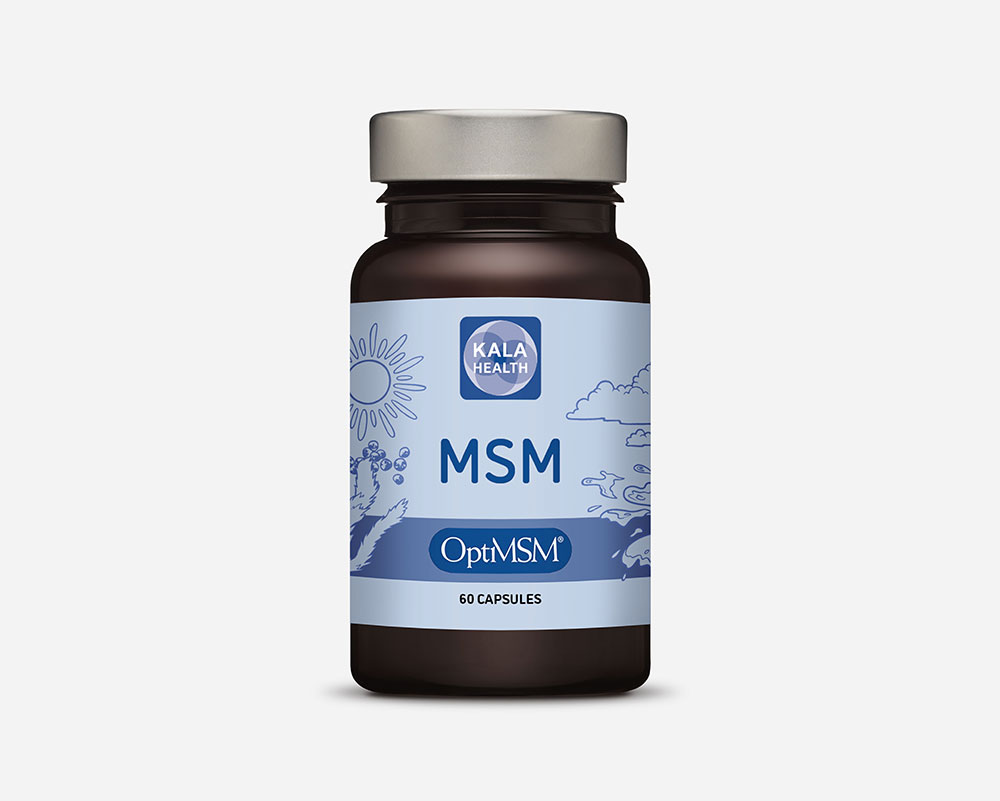
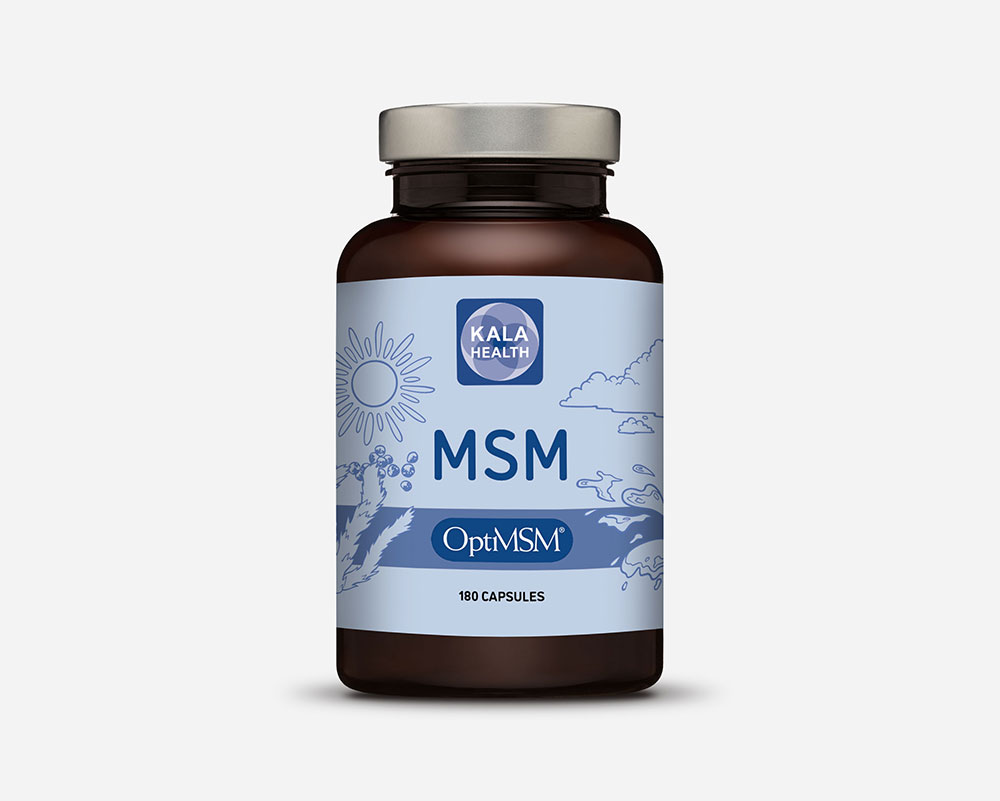
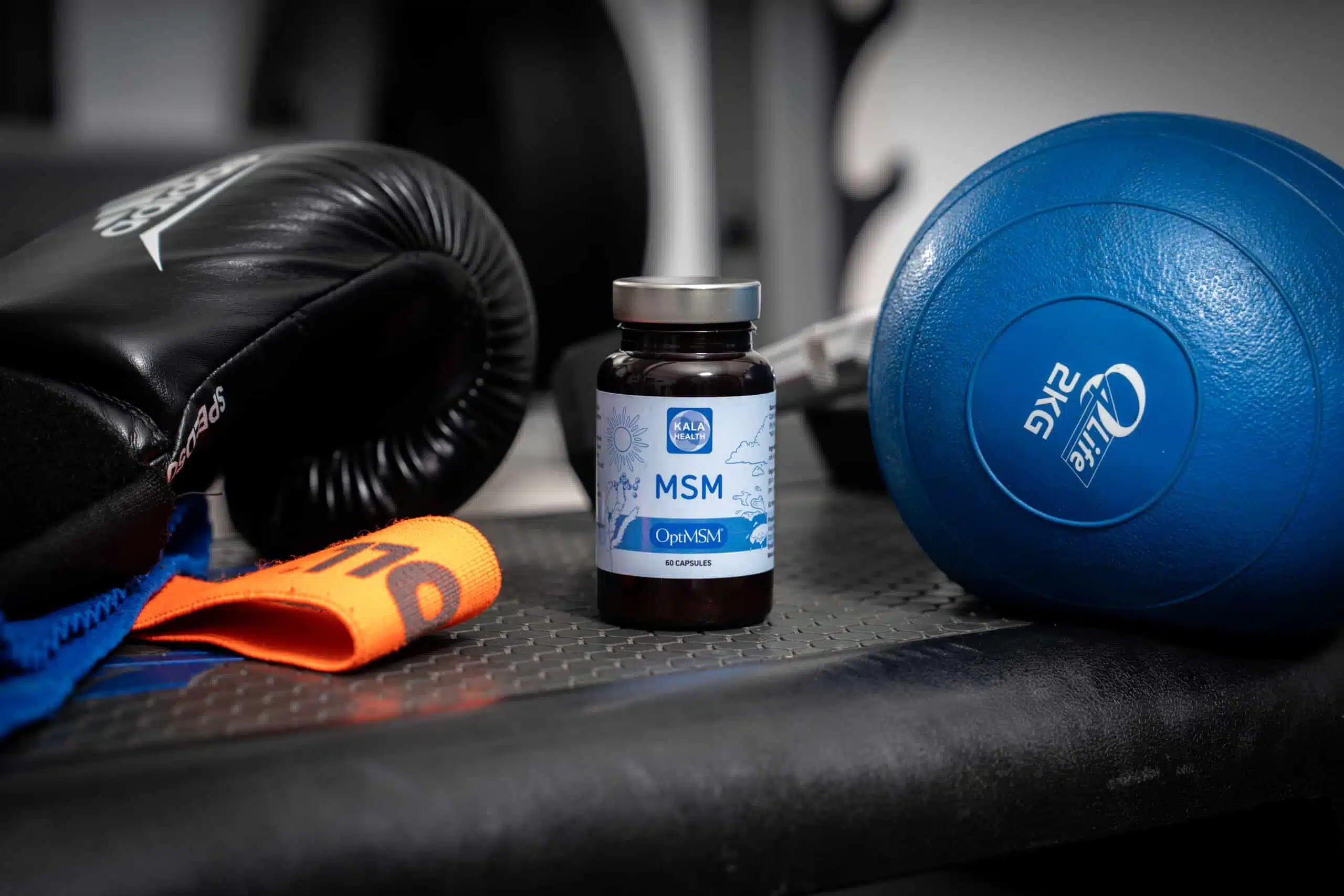




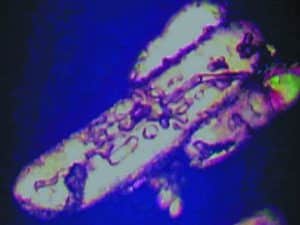
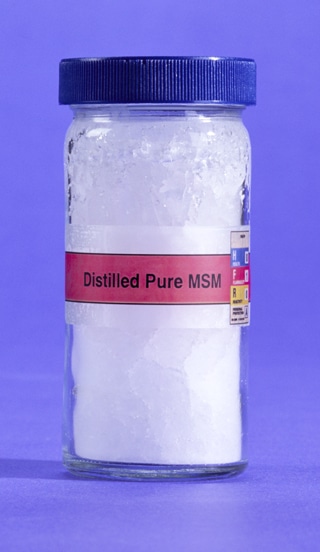
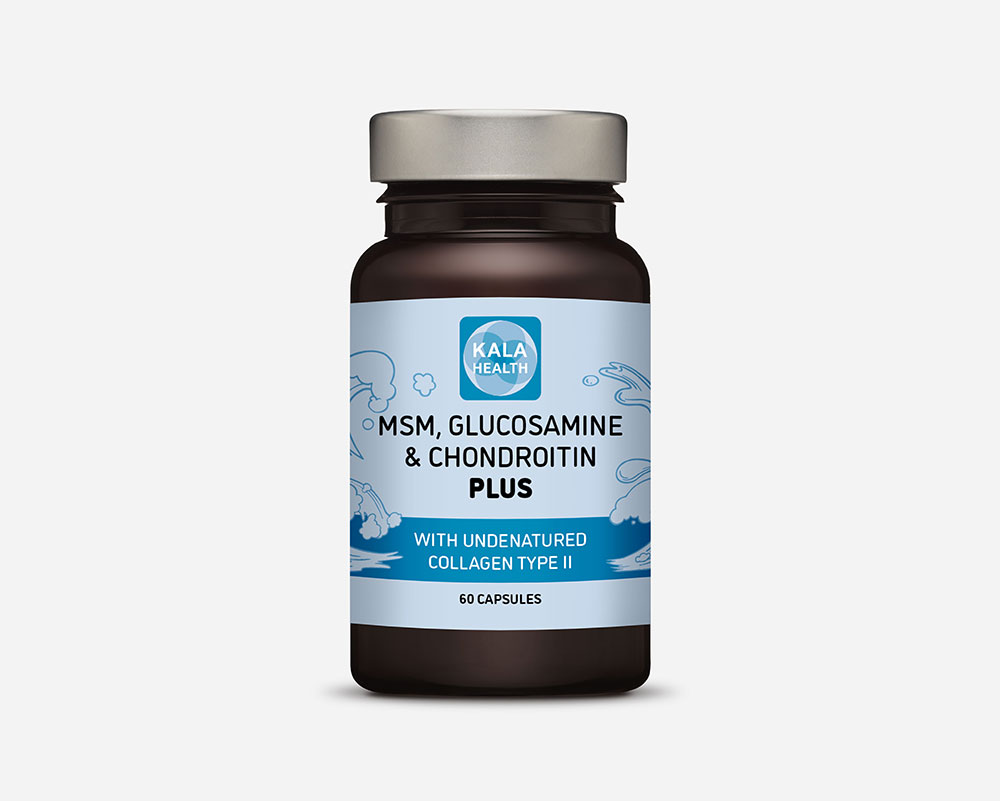
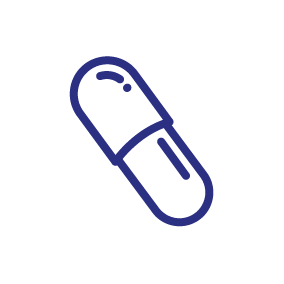 60 or 180 capsules
60 or 180 capsules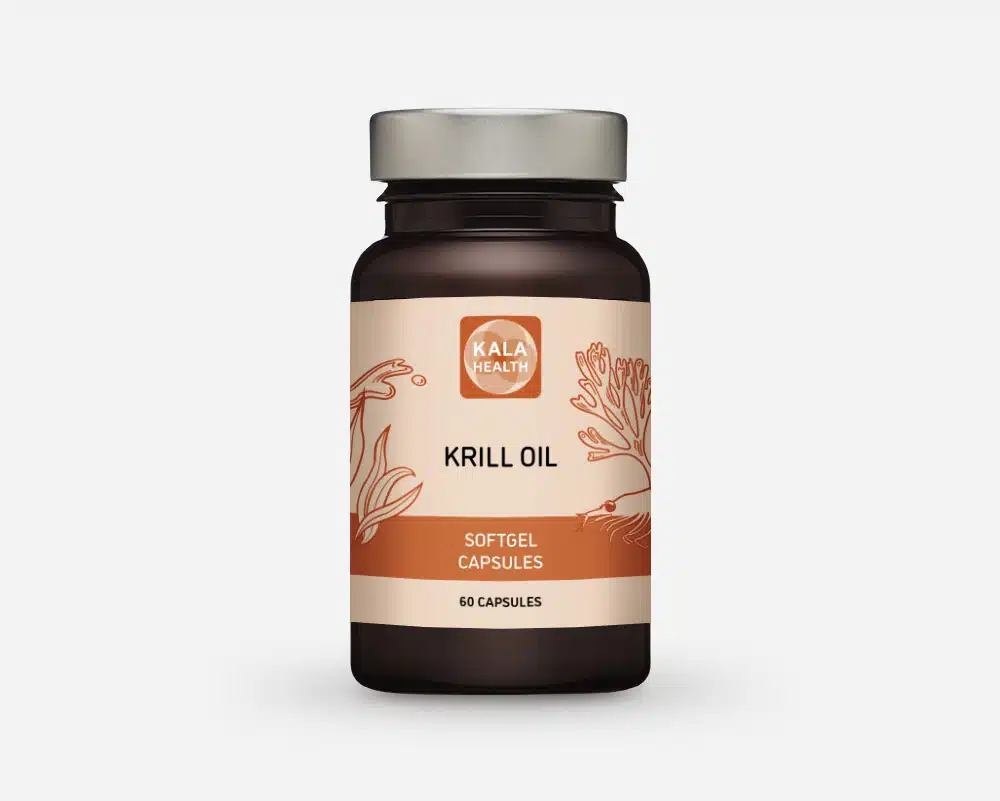
 60 or 180 Softgels
60 or 180 Softgels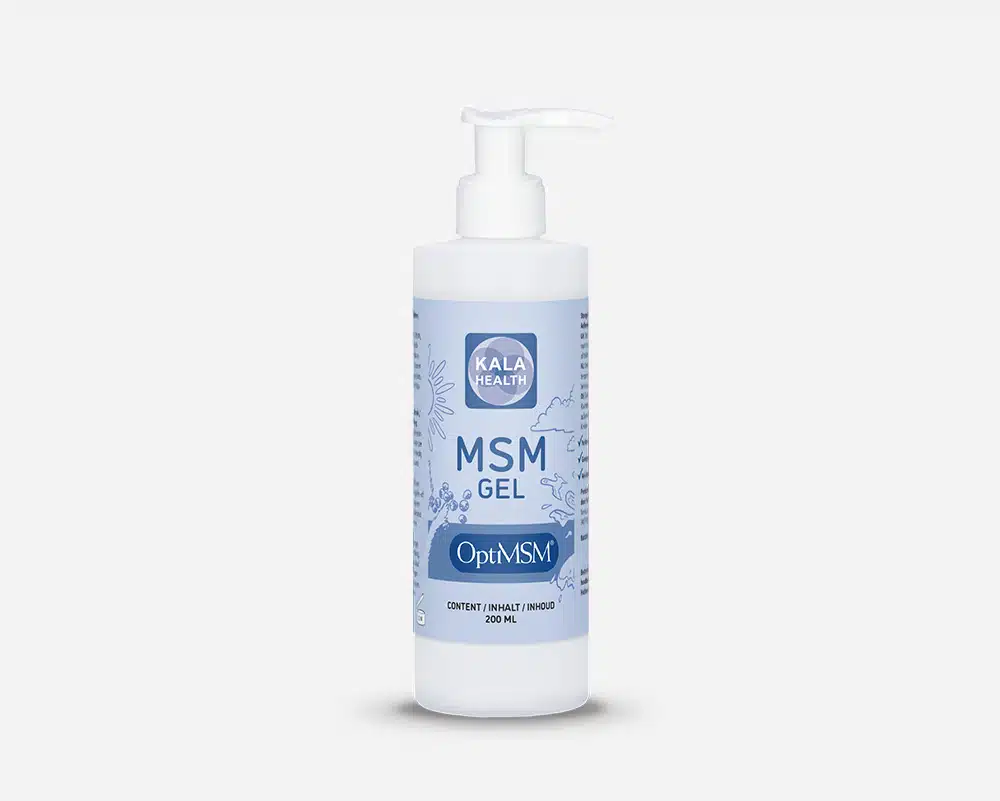
 200ml
200ml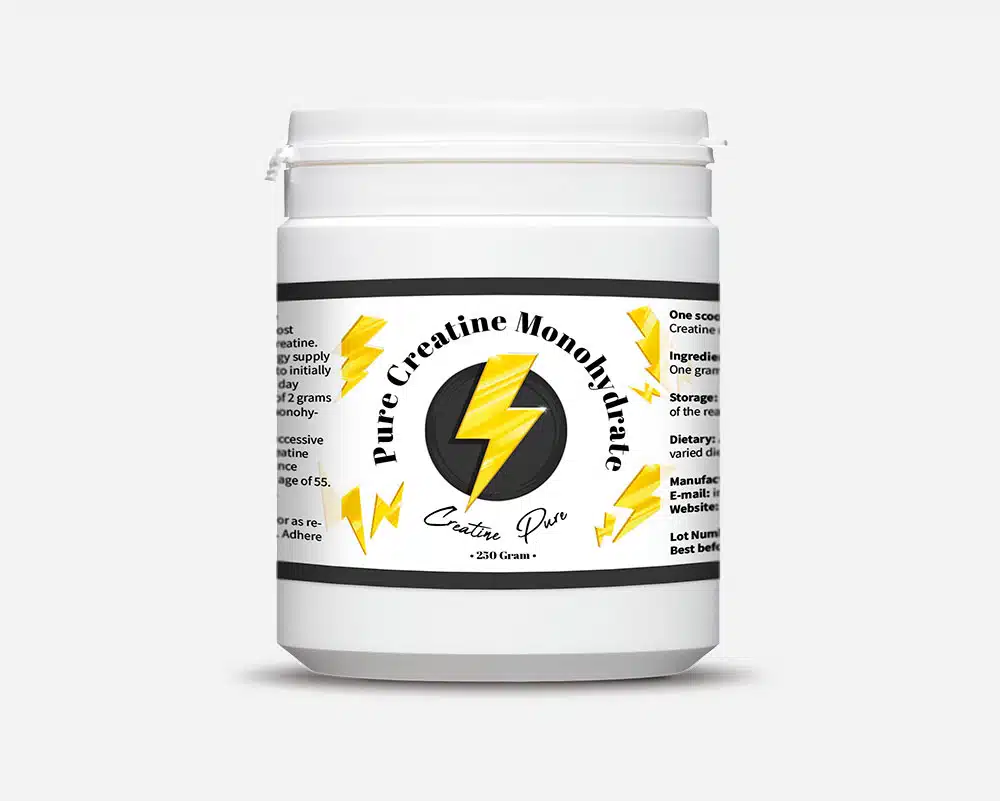
 250 or 500 gram
250 or 500 gram
FAQ